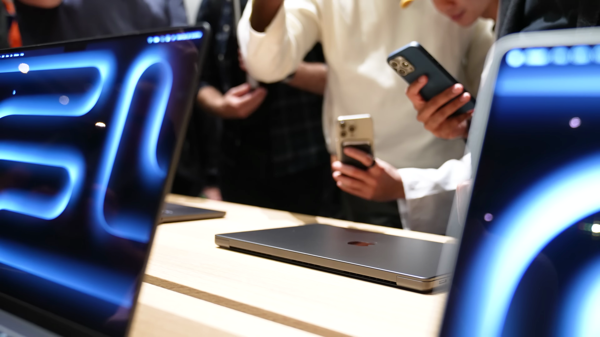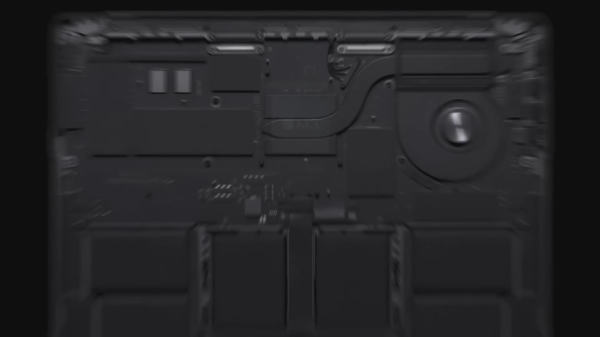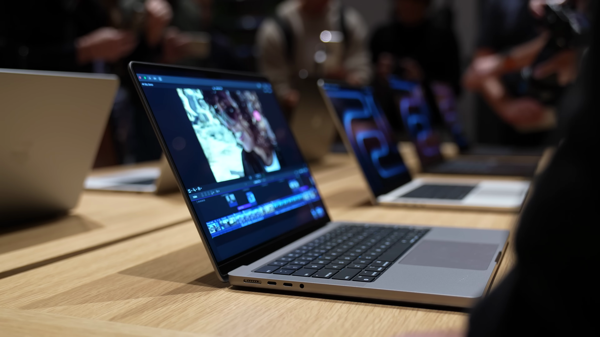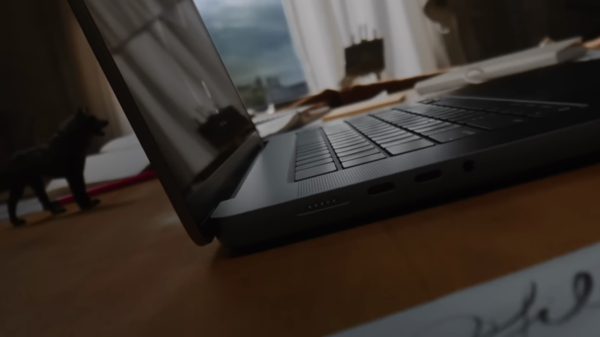Note: As an Amazon Associate I earn from qualifying purchases.
Photography on the new M3 Macbook Pro laptops: My thoughts (2023)
Introduction
As a photographer, it is easy to get lost in a maze of specs, workflows, and performance metrics when deciding between Apple’s new M3 Pro and M3 Max chips. I pore over countless high-res images and demanding tasks every day. The nuances between the chips are crucial, as one could argue it’s a choice between practical adequacy and cutting-edge technology. Below are some more of my thoughts.
Prices
Check prices of the M3 Macbook Pro on:
Photos
Click on photos to enlarge them:
Assessing M3 Pro vs M3 Max for Photography
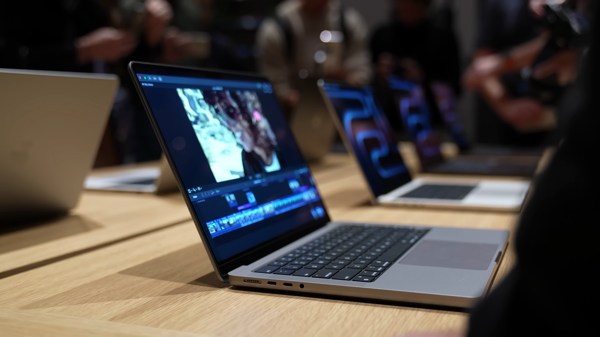
When facing the choice between the M3 Pro and the M3 Max for photography editing, several factors come into consideration. Professional photographers and enthusiasts alike are seeking out opinions on which chip is the most suitable for their craft, especially given the financial investment. Here’s a rundown of my thoughts, leaning on what I’ve gathered:
M3 Pro:
Adequate performance for most photography tasks.
Lower cost — could allocate budget to other essentials like RAM, storage, or lenses.
Might struggle with high-resolution video editing or intensive tasks like denoise on bulk images.
M3 Max:
Significant performance boost — beneficial for reducing time on resource-intensive tasks.
Extra GPU cores which could come in handy for more demanding tasks and future software upgrades.
Higher cost — might be overkill for those with a focus on still images rather than high-res videos or 3D modeling.
In practical terms, the M3 Pro seems more than capable for editing high-megapixel photos and handling light video work. It’s the more cost-effective choice, and for semi-professional photographers, it seems to hit the sweet spot between performance and price. However, for anyone dealing with large RAW files from cameras with 60 megapixels or above, the story starts to shift. For more detailed insights on its performance, consider reading Apple’s new Macbook M3 Pro: some reflections.
From discussions, it’s clear some find the 18 GPU cores on the M3 Pro sufficient until their workload intensifies, perhaps due to an upgrade in camera gear which demands more from the system. In such cases, the 30 GPU cores on the M3 Max alongside faster CPU cores could become a critical advantage. Users have reported significant speed improvements in tasks like denoising, which might justify the extra cost for professionals who time their tasks rigorously.
A shared sentiment is that the importance of RAM cannot be overemphasized; more so than the difference between the Pro and Max GPU cores. An increase in RAM demonstrates a noticeable impact on performance, particularly when juggling multiple high-resolution images and editing software.
Overall, the M3 Pro is a powerful chip that’s likely to serve well for the next few years. However, the M3 Max does hold a performance edge that might be worth the investment for professionals pushing their systems with heavy multitasking, dealing with enormous files, or those looking to future-proof their setup as software demands evolve.
So, while both have their merits, the decision ultimately comes down to your specific needs and how much wiggle room is in your budget. For many users, the M3 Pro will be ample, especially if optimized with additional RAM. But for the power users among us, the M3 Max is a compelling beast that’s hard to ignore, especially when considering the trajectory of software development and photography gear advancements.
The Role of RAM in Photo Editing Workflow

The Role of RAM in Photo Editing Workflow is crucial, something that has become increasingly apparent as file sizes balloon and editing software becomes more feature-rich. In my experience upgrading from an 8GB setup to a system with significantly more RAM (let’s say, 32GB or more) is transformative. Here’s a quick rundown:
Speed: More RAM typically means a smoother experience when flitting between high-resolution files.
Multitasking: With ample RAM, juggling Photoshop, Lightroom, and other apps simultaneously doesn’t bog down the system.
image- Future-Proofing: “macbook-m3-pro-33”
Despite these clear benefits, investing in extra RAM can feel like entering into an economic tug-of-war. High RAM capacities aren’t cheap, and it can be tempting to save cash upfront and opt for a lower spec configuration. However, if you’ve sat in front of a spinning wheel while applying a denoise filter to a batch of RAW files, the value of extra memory becomes painfully clear.
For instance, tasks like batch processing, hdr merges, and panorama stitching in Lightroom, which are pretty staple in my workflow, dramatically benefit from high RAM. Adobe Lightroom’s own system requirements suggest 16GB as the minimum for comfortable use, but between us, that’s playing it safe — 32GB is the sweat spot where you really start to see the gears shift seamlessly. In fact, upgrading your hardware can significantly enhance the performance of such resource-intensive tasks, as I’ve experienced with my Intel Core i9-14900K: My Gaming / Productivity experience.
The drawbacks? The cost-benefit analysis can get muddied over time. We’ve all heard the old adage, “buy the best you can afford,” but defining ‘best’ often sits at the intersection of present needs and anticipated future requirements. Moreover, the incremental real-world speed improvements may plateau beyond a certain point, leaving us to question the return on investment for maxing out RAM capabilities.
To add on, RAM isn’t the only factor - the GPU, SSD speeds, and the CPU all play into performance. However, in my experience, RAM’s ability to eliminate bottlenecks in the editing process is unmatched. The moment you shift from tweaking a single image to parsing through a full shoot is where you feel the difference. And with newer, more complex editing algorithms emerging, robust memory becomes not just a convenience but a necessity.
Here’s one last thought – as you balance the pros and cons, consider the storage, which has its role to play. But recall that hitting a bottleneck with RAM is like hitting a wall in terms of system performance, while running out of storage space is a hurdle that can often be mitigated with external solutions.
Ultimately, investing in generous RAM is an investment in your workflow fluidity. It’s the breathing room that allows your creativity to flourish without technical interruptions.
Evaluating the Economic Value of M3 MacBook Pro Models

When assessing the economic value of the new M3 MacBook Pro models, it’s essential to consider not just the sticker price, but the total cost of ownership over the life of the device. We’re looking at expenditures versus performance and longevity. Let me break this down:
Performance: Will the machine cope with the escalating demands of photo editing software?
Longevity: Is it equipped to handle future updates and larger files?
Resale Value: Macs hold their value well, but higher-end models tend to depreciate slower.
Time Efficiency: Faster processing can mean more work done in less time, impacting earnings for professionals.
The base M3 Pro, with its 18 GPU cores, might seem ample now, but the question is whether it will suffice in the long run. The M3 Max, on the other hand, with 30 GPU cores, will blaze through tasks today and has a GPU buffer for the unknown demands of tomorrow.
In terms of RAM, jumping from 18GB to 36GB can be a significant upgrade for handling big RAW files. Yes, it increases costs, but it also exponentially increases the machine’s capability to multitask efficiently.
Now, onto the drawbacks. We’re looking at a hefty price tag for the M3 MacBook Pros, especially when you upgrade from the base models. The question you have to ask yourself is whether the speed and efficiency gains justify the extra cost. For some, the answer is a resounding “yes,” while others might never push their machines hard enough to see the return on investment.
From a personal standpoint, as someone who deals with high-resolution photography and expects to graduate to even larger files in the future, my inclination leans toward the M3 Max. It’s not just about handling what I throw at it today but also what I might in the coming years.
Consider the following when evaluating the M3 MacBook Pro models:
Pros:
State-of-the-art M3 chip performance.
Potential for increased productivity.
Strong resale value.
Cons:
High initial investment.
Diminishing returns for those with lighter workloads.
Increased cost of ownership when opting for higher specs.
In conclusion, your mileage may vary. For those turning over high volumes of professional work, the cost is justifiable. For hobbyists, a lower-spec system may make the most sense. As for me, I’d lean toward paying the premium now, rather than facing frustrations down the road. Always remember, buying tech is also about buying time, and for professionals, time is indeed money.
Future-proofing Your Photography Gear with M3 Chip

Navigating the latest in Apple’s hardware can be quite the odyssey, especially as a photographer seeking to future-proof your gear. The key question most of us grapple with is: Will the M3 chip meet the demands of our evolving workflow? It’s a bit of a balancing act, threading the needle between performance needs and economic realities. The M3 Pro and M3 Max certainly promise longevity, but they come with their own set of considerations.
Pros:
The M3 Pro, with its 18 GPU cores, is no slouch. For most photo editing tasks, it’s a veritable workhorse. Its capabilities in handling high-resolution images should be sufficient for many, and it’s likely a wise economic choice if you’re editing still images primarily.
Upgrading to the M3 Max does provide a performance boost that’s noticeable in GPU-intensive tasks. If your work includes video editing or 3D rendering, those extra GPU cores might justify the cost.
RAM, while covered more extensively in another section, deserves a mention here as well - it’s critical. Both chips support generous amounts of it, which is a boon for handling large files and multitasking.
Cons:
While the M3 Pro is capable, there is concern within the photography community about its longevity when dealing with future software updates and larger file sizes from newer cameras.
The M3 Max, though more powerful, pushes the price point significantly higher. It’s worth asking if the extra power is necessary for your current needs or if it’s more about cushioning for the future.
Apple’s ecosystem can handcuff you to their upgrade cycle, and these chips are no exception. Investing now might mean a less capable machine in a few short years as technologies advance.
Considering these factors, my tilt towards the M3 chips, particularly the Pro variant, is grounded in its balanced offering of power and economic value. The M3 Max’s beefier specs make it tempting, but only if you’re certain your workflow demands that horsepower. Yet, there’s an unavoidable trade-off when it comes to cost; the Max’s price tag is no small pill to swallow.
In conclusion, while future-proofing is a compelling argument, it’s also worth weighing the real-world implications of such an investment. Cameras are evolving, file sizes are growing, and software demands are increasing - factors that anyone serious about their craft cannot ignore. Whether the M3 Pro or M3 Max is the right choice will largely depend on individual needs. However, it’s clear that both chips offer a solid foundation for photographers looking to keep pace with the advancing tide of technology. The hope is that either of these chips will remain competent companions in a photographer’s digital darkroom for years to come.
